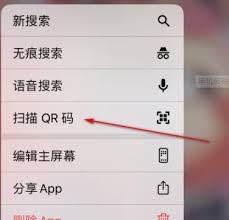1.Install and say
时间:2010-05-30 来源:CZFanny
1) http://www.python.org/download/releases/2.5.4/
下载python-2.5.4.msi
2) http://www.djangoproject.com/download/
下载Django-1.0.2-final.tar.gz
3) http://sourceforge.net/projects/mysql-python/
下载MySQL-python-1.2.2.win32-py2.5.exe
2. Software Installation:
1) Install Python: python-2.5.1.msi [higher version like PortablePython_1.1_py3.0.1.rar may has error when install Django(1.1.1,1.2.1)]
2) Install Django: Django-1.1.1.tar
将Django-1.1.1.tar解压到python的安装目录下(本例为C:\Python25\Django-1.1.1),命令行进入C: \Python25,执行“python Django-1.1.1/setup.py install” ,Django即被安装到C:\Python25\Lib\site-packages\django下(C:\Python25\Django-1.1.1可删除)。
# 执行python提示找不到该命令时,说明没有设置环境变量。
[右击“我的电脑”->“属性”->“高级”->“环境变量”,选择“PATH”,点“编辑”,把;C:\Python25加入“变量值”中(注意分号分割)。确定。针对 python的环境变量重启cmd就可以了,但是设置关于系统服务的环境变量就必须重启电脑了.]
3) Install MySQL-python: MySQL-python-1.2
3. Test environment is ready:
1) C:\Python25>python C:\Python25\Lib\site-packages\django\bin\django-admin.py startproject mysite
在当前目录(运行命令的目录)创建一个 mysite 目录。
mysite/
__init__.py [让 Python 把该目录当成一个开发包 (即一组模块)所需的文件。]
manage.py [一种命令行工具,可让你以多种方式与该 Django 项目进行交互。]
settings.py [该 Django 项目的设置或配置。]
urls.py [该 Django 项目的 URL 声明,即 Django 所支撑站点的内容列表。]
2) python manage.py runserver
# 默认情况下, runserver 命令在 8000 端口启动开发服务器,且只监听本机连接。要想要更改服务器端口的话,可将端口作为命令行参数传入:
3) 服务器已经运行起来了,现在用网页浏览器访问 http://127.0.0.1:8000/ 。你应该可以看到一个欢快的淡蓝色所笼罩的 Django 欢迎页面。一切正常!
4.A small example:
1) Base on phase 3.
2) Make a new file named:view.py
|
from django.http import HttpResponse |
3) Edit urls.py:
|
from django.conf.urls.defaults import * |
4) Input:http://127.0.0.1:8000/time/ into browser
5. Go further
1) Base on phase 4.
2) Edit view.py,add following function:
|
def hours_ahead(request,offset): |
3) Edit urls.py:
|
from django.conf.urls.defaults import * |
4) Input into browser:
http://127.0.0.1:8000/time/
http://127.0.0.1:8000/time/plus/3/
http://127.0.0.1:8000/time/plus/31/










